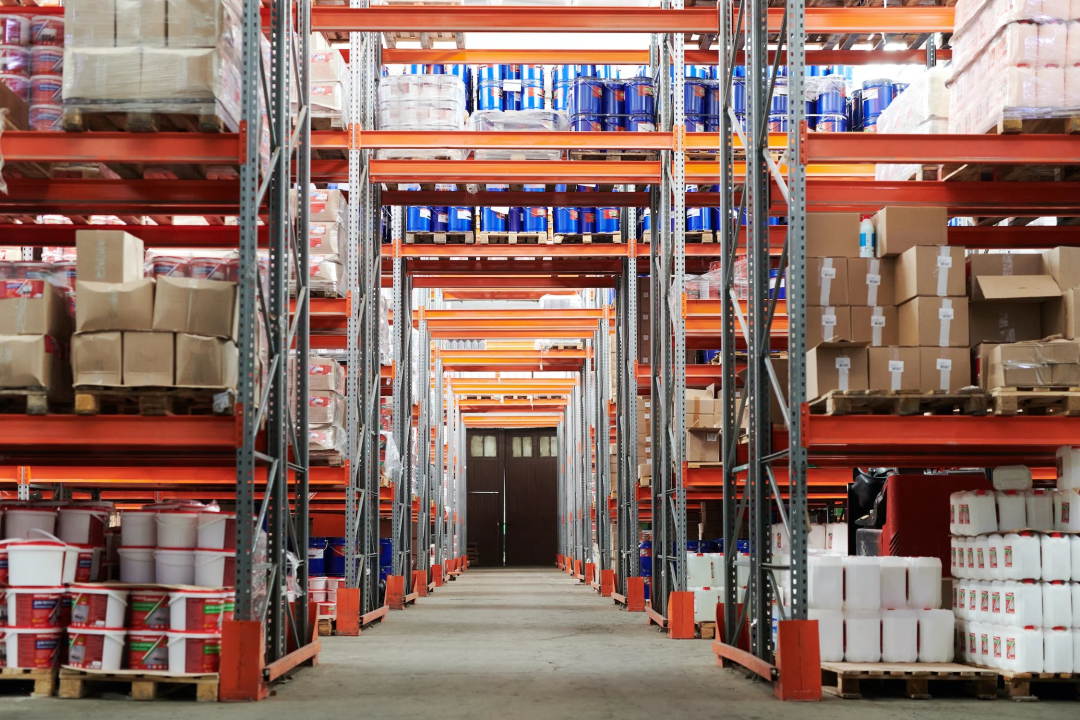In the complex world of supply chain operations, the location of a warehouse is very important. It can greatly affect how well a business works and how much money it makes. A warehouse is more than just a place to store goods. It plays a key role in the whole supply chain. The location can impact shipping times and transportation costs, which are important for customer satisfaction. It is important to carefully look at possible warehouse locations. This helps make supply chain operations better and leads to long-term success.
Strategic Benefits of Optimal Warehouse Location
A well-placed warehouse is the backbone of a strong and affordable supply chain. The site of the warehouse can affect how well a company meets customer needs, manages its inventory levels, and keeps costs down.
When picking the best spot for a warehouse, companies need to think about several key factors. This includes how close it is to target markets, ease of access to major roads, labor costs, and the local economy and rules. By choosing a warehouse location that matches their business goals, companies can gain important benefits.
Proximity to Key Markets
Finding warehouses close to your main customers has a big advantage in today’s fast-moving ecommerce world. When warehouses are near customers, shipping distances and times are shorter. This means lower transportation costs and quicker deliveries.
For businesses in ecommerce fulfillment, being close to customers is very important. Today’s consumers want their orders fulfilled quickly, so having a warehouse nearby is essential for meeting this need.
Also, a good location helps businesses react quickly to changing demand and new market trends. By reducing the distance between production, storage, and consumers, companies can improve their operations and be more responsive overall.
Access to Major Transportation Routes
Efficient logistics depend a lot on smooth transportation. That is why having easy access to main transportation routes is very important when choosing a warehouse. Being close to highways, airports, railways, and ports helps move freight in and out of the facility easily.
A warehouse in a good location makes the flow of goods faster. This means lower transportation costs and shorter lead times. Better access helps use resources well and improves inventory management.
Picking a site with strong transportation options helps businesses speed up their logistics and save money. This choice can make the overall supply chain performance much better.
Impact of Warehouse Location on Supply Chain Efficiency
Warehouse locations play a big role in how well supply chains work. By placing warehouses in smart spots, companies can improve their logistics and how goods move. This results in quicker delivery times, lower costs, and a better ability to respond to market needs.
Choosing the right location helps cut down on how much products are moved around. This helps businesses manage their inventory better and save on storage costs. In the end, a good supply chain can lead to more profits and a stronger position in the market.
Reducing Transportation Costs
For many businesses, transportation costs are a big part of what they spend. Choosing a good warehouse location is very important for keeping these costs low. This decision can lead to significant savings.
When shipping costs go down, it is often because the distance and time to deliver goods are shorter. By placing warehouses closer to important customers or production sites, companies can cut down on how far products need to go. This means less fuel use and lower vehicle maintenance.
These savings matter a lot for business owners, especially in industries that ship a lot or work with products that need to arrive quickly. A well-located warehouse can help boost profits and give a company an edge in the market.
Enhancing Speed of Distribution
In today’s competitive market, quick and efficient order fulfillment is very important. It helps meet customer expectations and builds loyalty to a brand. The location of a warehouse is key in improving distribution networks and speeding up delivery times.
By picking a smart location near major transport routes and close to important markets, businesses can lower the time needed for products to reach customers. Faster delivery times lead to happier customers and give a business an advantage in tough industries.
Also, a well-located warehouse improves operations by making receiving and shipping easier. This efficiency keeps orders moving and sent out quickly. It helps a company gain a strong reputation for offering great service and fulfilling the needs of customers.
Factors to Consider When Selecting a Warehouse Location
Choosing the best warehouse location is important and requires looking at several key factors. It’s vital to be close to important markets and transportation routes. Businesses must also think about local infrastructure, labor costs, real estate trends, and whether there is a skilled workforce. This helps to ensure success and good returns over time.
Additionally, understanding local rules, taxes, and any possible environmental issues is crucial. By doing careful research and looking closely at these factors, businesses can find a warehouse location that meets their needs and supports their goals.
Local Infrastructure and Accessibility
It is important to evaluate the local infrastructure around potential warehouse sites. This helps in keeping logistical operations running smoothly. Good road networks, closeness to airports or railways, and reliable utilities are essential for easy transportation and effective warehouse operations.
Besides basic infrastructure, easy access to the local market matters too. A well-connected place allows suppliers and customers to reach you easily. This cuts down transportation time and costs for both incoming and outgoing logistics.
While looking at infrastructure, think about future growth. Picking a spot with space for expansion or in an area with ongoing infrastructure projects can offer flexibility and meet a business’s changing needs.
Labor Availability and Costs
A key part of running a successful warehouse is having a reliable and skilled workforce. When you look at new warehouse spots, think about finding qualified workers and how much it will cost.
Look into local details like population, unemployment rates, and training centers for logistics and warehousing. A skilled workforce is necessary for keeping warehouse operations running smoothly. It helps ensure accurate order fulfillment and effective inventory management.
Keep in mind that labor costs can change a lot by location. Consider the current wage rates, benefit options, and local job laws when you think about the cost of a site for your warehousing needs.
Real Estate Market Trends
Investing in a warehouse costs a lot of money. So, it is very important to look at real estate market trends in possible areas. You need to know about property values, rental rates, and how the local economy is doing to make smart choices.
Do detailed research on past property values, current market rates, and expected growth in the places you are thinking about. Consider risks like economic drops or changes in the real estate market. This will help you see if the location is good for long-term investment.
Talking to local real estate agents or checking industry reports can give you useful information about what’s happening in the market and the risks of investment. Having a clear understanding of the real estate market is key when you make such a big financial decision.
How Warehouse Location Influences Customer Satisfaction
Warehouse location is very important for keeping customers happy. It affects how well a company can meet and even go beyond delivery expectations. When a warehouse is in a good spot, it leads to better customer experiences. This can create loyalty and encourage customers to come back for more.
When warehouses are placed wisely, delivery times get faster. This leads to happier customers. Also, shorter shipping times help keep the quality of products high, especially for goods that can spoil or are fragile. This further boosts customer satisfaction with every order.
Meeting Expectations for Rapid Delivery
Customers today are influenced by companies like Amazon. They expect fast delivery times. Meeting these expectations is vital for keeping customers happy and staying competitive.
Strategic warehouse location is important for fast delivery. When inventory is closer to your customer base, you can offer faster shipping options. This includes next-day or even same-day delivery, and you can do it without high costs.
By focusing on warehouse locations that support quick delivery, businesses can boost customer satisfaction. This leads to fewer people leaving their online shopping carts and helps build customer loyalty. In turn, this growth can increase revenue.
Maintaining Product Quality Through Shorter Transit Times
A key benefit of having a good warehouse location is how it helps keep products in good shape. This is especially true for businesses that store goods needing special care or those that might get damaged when shipped. The less time products spend in transit, the better their chances of staying quality.
Shorter shipping times help reduce the risk of damage, spoilage, or decline in quality. This is crucial for items sensitive to temperature changes, rough handling, or long exposure to different conditions. When products arrive in great condition, businesses can cut down on returns, waste, and make customers happier.
This is very important for businesses with perishable goods, medicines, electronics, or other products where keeping quality during shipping matters for trust and brand image.
The Role of Environmental Considerations
As more people care about the environment, it’s important to add sustainability into all parts of business. This includes how businesses choose their warehouse locations. Picking eco-friendly warehouse spaces and using green practices every day is now a duty for businesses that want to be responsible.
Check how energy-efficient the warehouse is. Look for things like solar panels, LED lights, and good heating and cooling systems. Using green logistics methods like optimizing delivery routes, offsetting carbon, and choosing sustainable packaging also helps reduce environmental impact. When businesses make sustainability part of their warehouse operations, they help create a cleaner future and attract customers who care about the environment.
Sustainability Practices in Warehouse Operations
Integrating sustainability into warehouse operations is now a must. It helps businesses be more environmentally friendly. You can start by using green practices like energy-efficient lights, choosing recycled and recyclable materials, and cutting down waste with composting and proper disposal.
For sustainable transportation within your warehouse, consider several options. You can switch to electric vehicles for local deliveries. You might also plan better routes to save fuel and lower emissions. Use eco-friendly packaging by reducing material use, selecting recycled and biodegradable options, and working with suppliers who care about sustainability.
It’s very important to educate and involve employees about the best sustainability practices. This helps create a workplace that takes environmental responsibility seriously. By adopting these green practices, businesses can lessen their impact on the environment, lower costs, and improve their reputation as responsible companies.
Regulatory Compliance and Green Initiatives
Choosing a warehouse location means understanding environmental rules. Not following local, regional, and national laws can lead to large fines and harm a company’s image. It is important to study the rules for waste disposal, emissions, water use, and noise pollution in the areas you are looking at.
Look for warehouses that follow these rules and also focus on green practices in their design and operation. This shows a commitment to sustainability and helps lower the chance of future legal problems.
Making your warehouse operations fit with these environmental regulations and using sustainable practices is not only good for the planet. It also helps your business. It boosts your brand image, draws in customers who care about the environment, and decreases the chances of legal trouble.
Conclusion
Whether you’re a growing SME or an established corporation, choosing offices to let in Boksburg gives you a logistical advantage, cost savings, and access to a thriving business ecosystem. With its strategic location and robust infrastructure, Boksburg continues to attract businesses looking to optimize their operations and serve customers efficiently.











